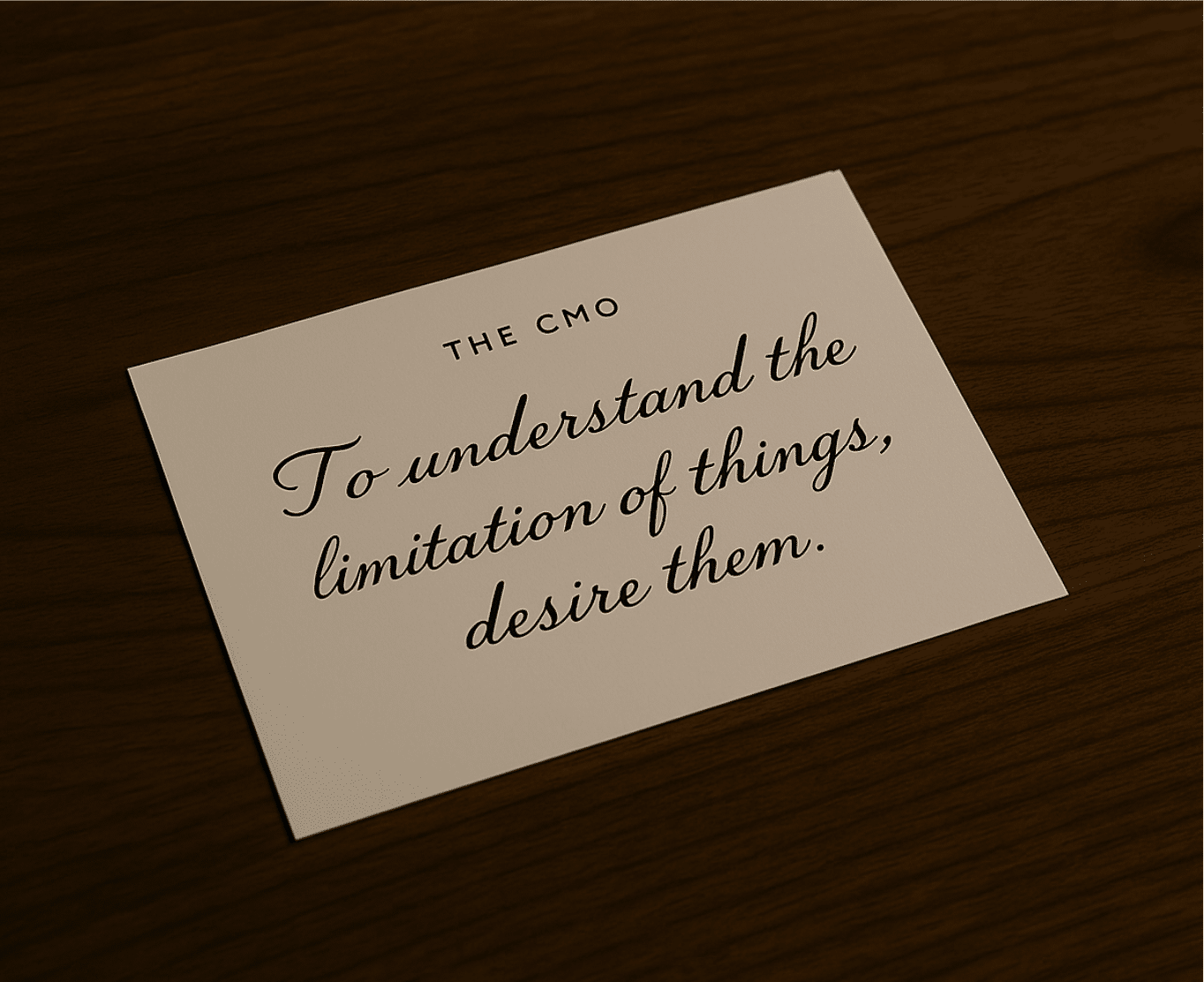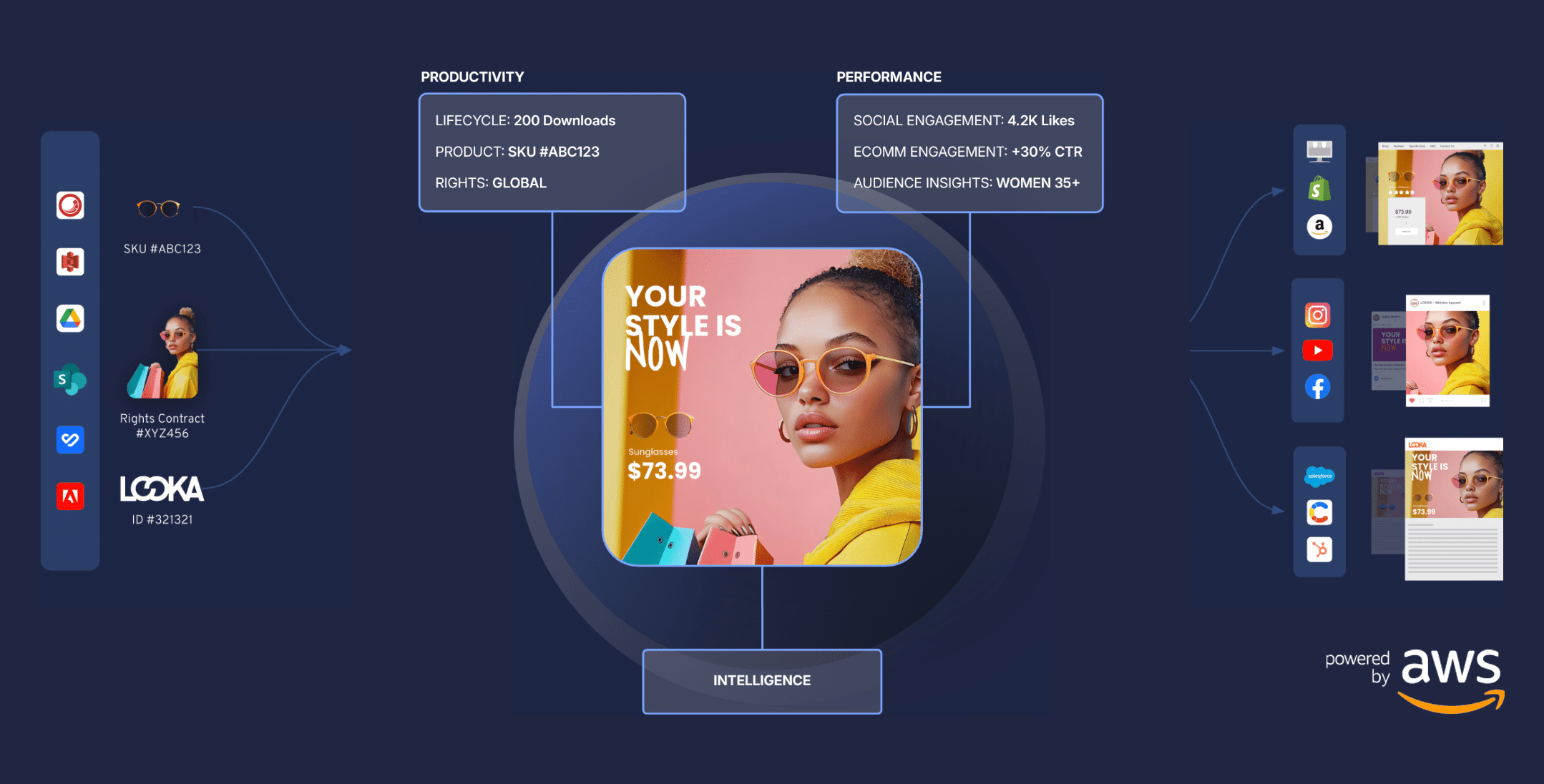The CMO Who Knows All
Doesn’t Always Use Software
by Mr. W. B. Tyler
She is known for her photoreal portraiture, which she creates in her favorite tool, Microsoft Excel. When she views an online ad, advertisers pay her.
She once—and this is confirmed—explained marketing to a salesperson and had them understand for a brief, glorious moment.
She is the CMO who knows all and nothing is beyond her.
Save for one simple thing that would change everything and serve as a magnum opus in what Academy of Motion Picture Arts and Sciences directors call the most interesting career of all time:
She’d like to know exactly where all her content lives, how it’s used, and what impact it makes.
Meet the CMO Who Knows All.
If she knew that, she’d know what happens to it after it’s published and how each content element performs across its 1,000-hop journey from an agency desk to a mobile phone in Mumbai—the whole content supply chain. Visualized.
So the CMO who knows all is on a journey to figure that out—and I know this because our paths once crossed, and fates entangled.
At a museum that was unveiling a memo she’d written her team, the audience all fainted. I did too. I was there. So was she. And she resurrected me.
As she helped me up, she pressed a mysterious note into my hand, which read:

Perhaps you see what I see, friend. I have been following her and trying to decode it ever since.
Into the Content Labyrinth
I thought about her note for a long time. At the time, I was a tour guide at the museum on weekends and a marketing technologist by day, and that latter career was rapidly unraveling. I’d bet everything on learning a technology that suddenly went defunct—sunk by privacy regulation and cookies. I’d been swept out of my cushy corporate job in a layoff and was adrift.
Back then, I understood her note to be a personal message, which assured me it was futile to quantify marketing.
Who could possibly know it all?
Even at companies with the strongest digital asset management (DAM) programs, not everything they create gets captured—actually, not even a fraction of it. A lot of content starts its life outside that system of record and is never incorporated–that’s as unfortunate as it is true.
At the global company where I’d worked, we had dozens of agencies and hundreds of brands across as many geographies. So, we also had a dozen (known) DAMs and hundreds of “interstitial repositories” like Google Drive, SharePoint, and Box.
Our agencies and internal teams would distribute our content across many paid, earned and owned channels in a web of unfathomable complexity. Our brand alone had social accounts in the hundreds, I am certain, as well as commerce sites, , in-store displays, product details, CRM channels, and third-party datasets.
By the time a piece of our content made it into a campaign in a channel in a particular geo, it was one dozen untraceable hops away from the source. And along the way, it’d been adapted as needed – clipped, cropped, and changed.
How could a company get visibility of all that–globally? How could they know the return on a particular photo or video–much less one that was used and reused across campaigns?
I wanted to give up on this question. But within me, belief lingered.
The fix would have to be an omnipotent tool with visibility into all of a company’s digital storage—DAM, interstitial, or cloud. It would have to snake its tendrils into all of the channels where content was being activated and recognize that content for what it was and had been originally, even if it had been altered.

Imagine, knowing for the first time where all of your assets reside and are managed. Everyone being able to search across these content sources and surface the content they needed, no matter where it lived.
And then, they could finally see how it is all performing—and where they might be able to optimize.
The tool would have to know all—because the challenges are vast, and the stakes are real:
Content sprawl happens—even with top-tier tools and governance.
Wasted content costs you—through budget, risk, and lost opportunity.
Your content lives everywhere—traditional metrics only tell part of the story.
I must admit I’d come to a rather jaded place; I’d even been uninvited from my local Martech user group.
So when I realized the CMO who knows all was involved in far more than I suspected, I began to follow her. Perhaps she knew. But of course, she couldn’t be followed.
For years, I pulled news clippings, but I was always three countries behind her. Over time, I gave up. I moved on. I took a boot camp, hid out at a big company doing deskwork, and my world narrowed.
Years later, I was on holiday with friends on a trek through the desert and was brushed from my camel by a falcon of immense strength and stunning coloration—and in that moment, as I watched it soar away, I knew she was near.

In our presence (which lasted less than 20 minutes), the CMO who knows all told me this:
She, too, had been seeking an answer.
Unlike me, she had found it. That’s when she told me–she doesn’t always use software, but when she does, it’s Tenovos Glass.
Such a tool wasn’t possible until the advent of large language models (LLMs) and agentic AI. But today, I assure you, it exists.
With the power of AI, Tenovos Glass unifies fragmented content ecosystems by connecting to all your content sources—DAMs, cloud storage, creative tools, and publishing platforms. It identifies assets utilized across channels, as they’re versioned, repurposed, or redistributed, offering a single, intuitive interface that tells any enterprise:
- What content do I have?
- Where is it being used?
- How has it performed–and why?
She went on to tell me how she has used this to cut her creative spend, which is astonishing because, at her company, the marketing department now drives such an impressive return that they have begun to refer to the sales team as a cost center.
But now that she knows all that exists, and precisely what is wasted and what worked best, she’s able to provide precision guidance to her internal and agency creative teams.
Oh, but the woman, you ask—what was she like? What I can tell you is this: Her voice is as thunder. Her gaze, kind yet pitiless. Hers was a passionate intensity and the amulet of some great animal with the body of a lion clinked against her many necklaces.
And yet I detected a faint note of melancholy—like that of someone who has everything and realized that in gaining everything, just a little bit is lost. Though, I could be imagining that.
It was only years later, standing in the desert with the weight of her words and the vision of Tenovos Glass before me, that I understood the true meaning of her note.

To desire full understanding—to want to know what exists, where it lives, and how it performs—is to recognize the limits of ordinary legacy tools and knowledge. It is to see that mastery comes not from gathering more, but from illuminating what was already there.
Tenovos Glass does not simply promise visibility. It reveals it.
And for the CMO who knows all—that was never ambition. It was destiny.
Where was this desert that I came across her? I shan’t say. But I would implore you. Disabuse yourself of the notion that the mystery is infinite—marketing has been solved. I have seen it. You can too.
It’s a lot of power to handle. But if you’ve followed me this far, I think you are ready for it.
